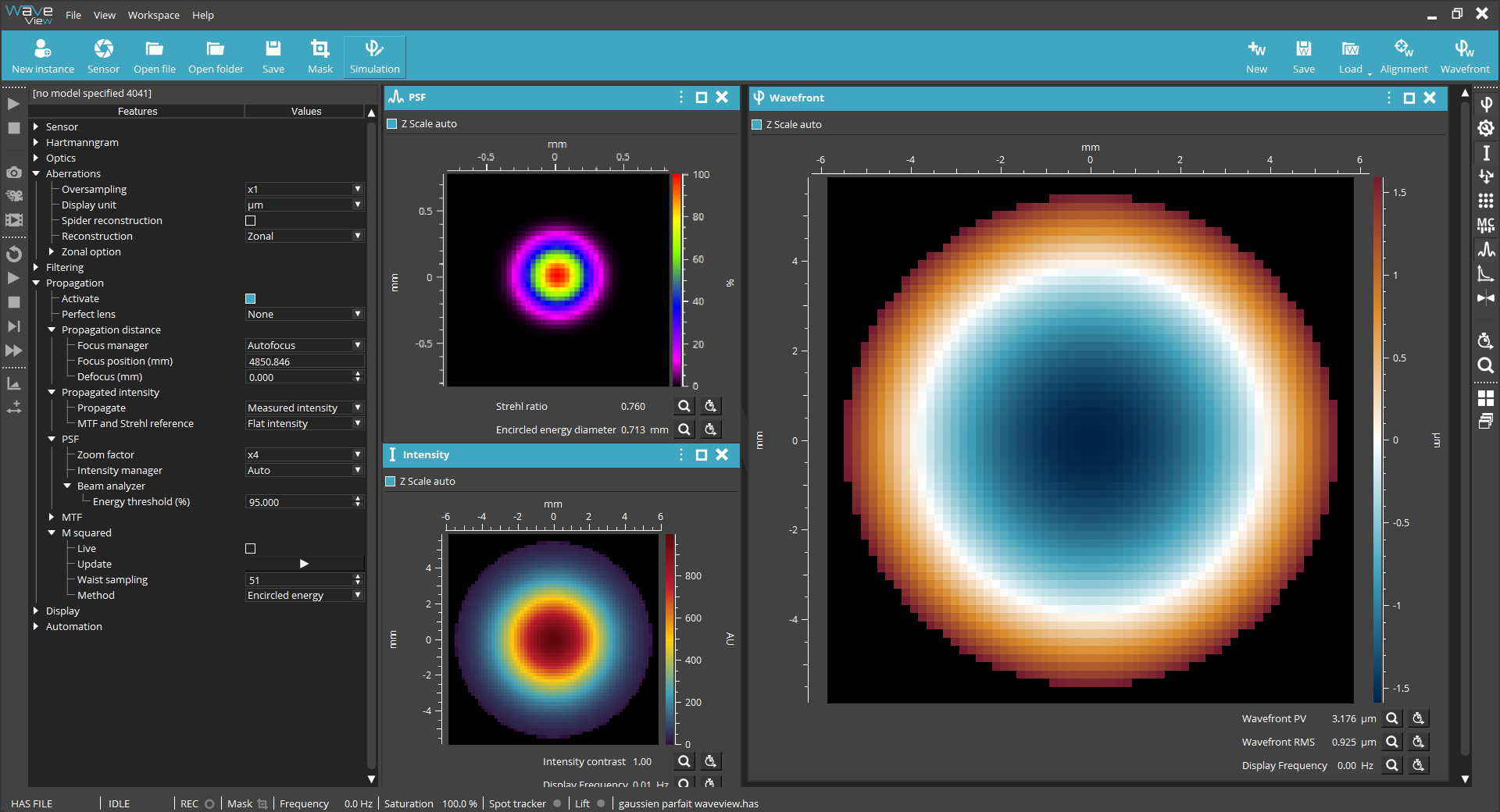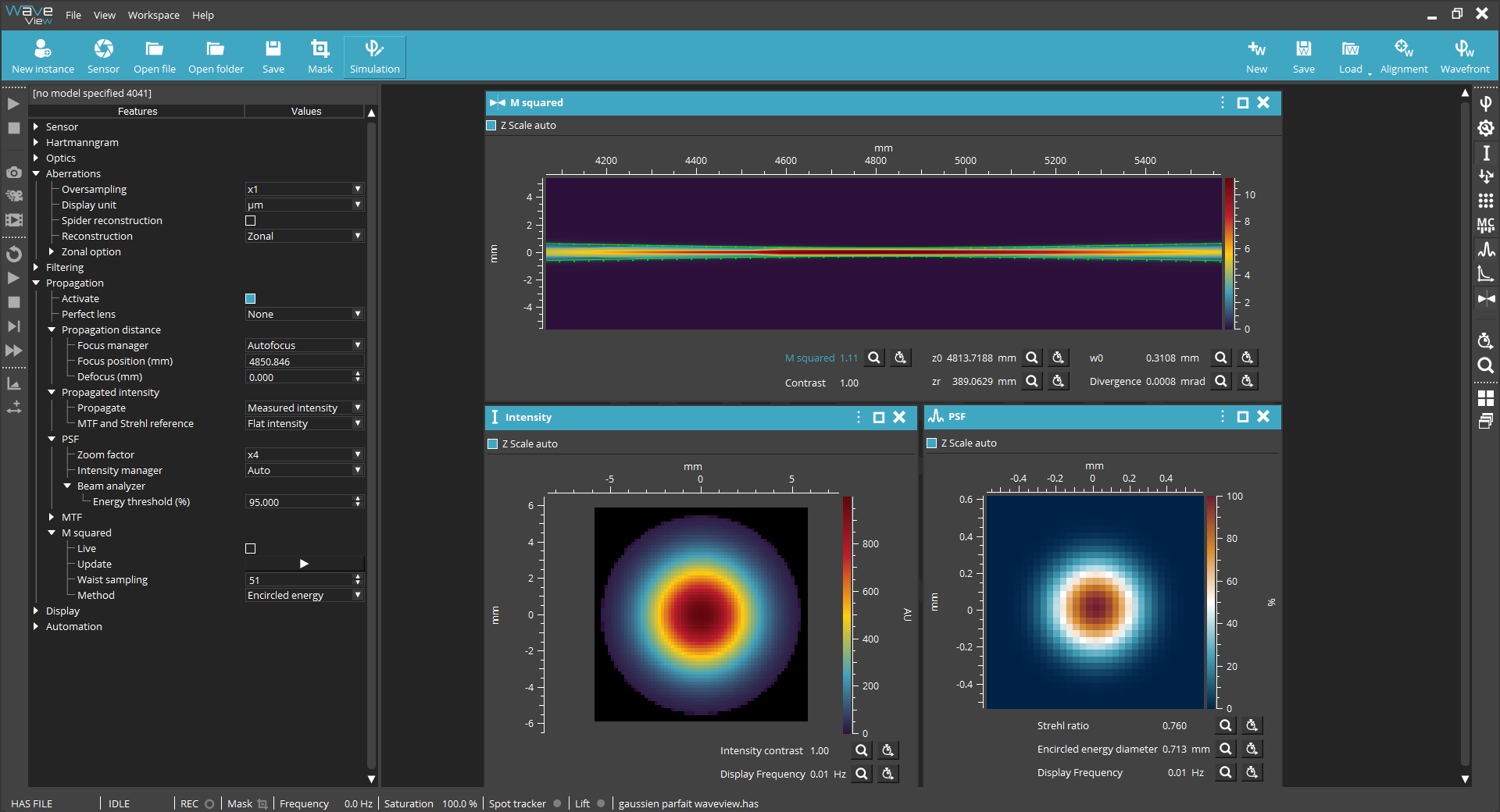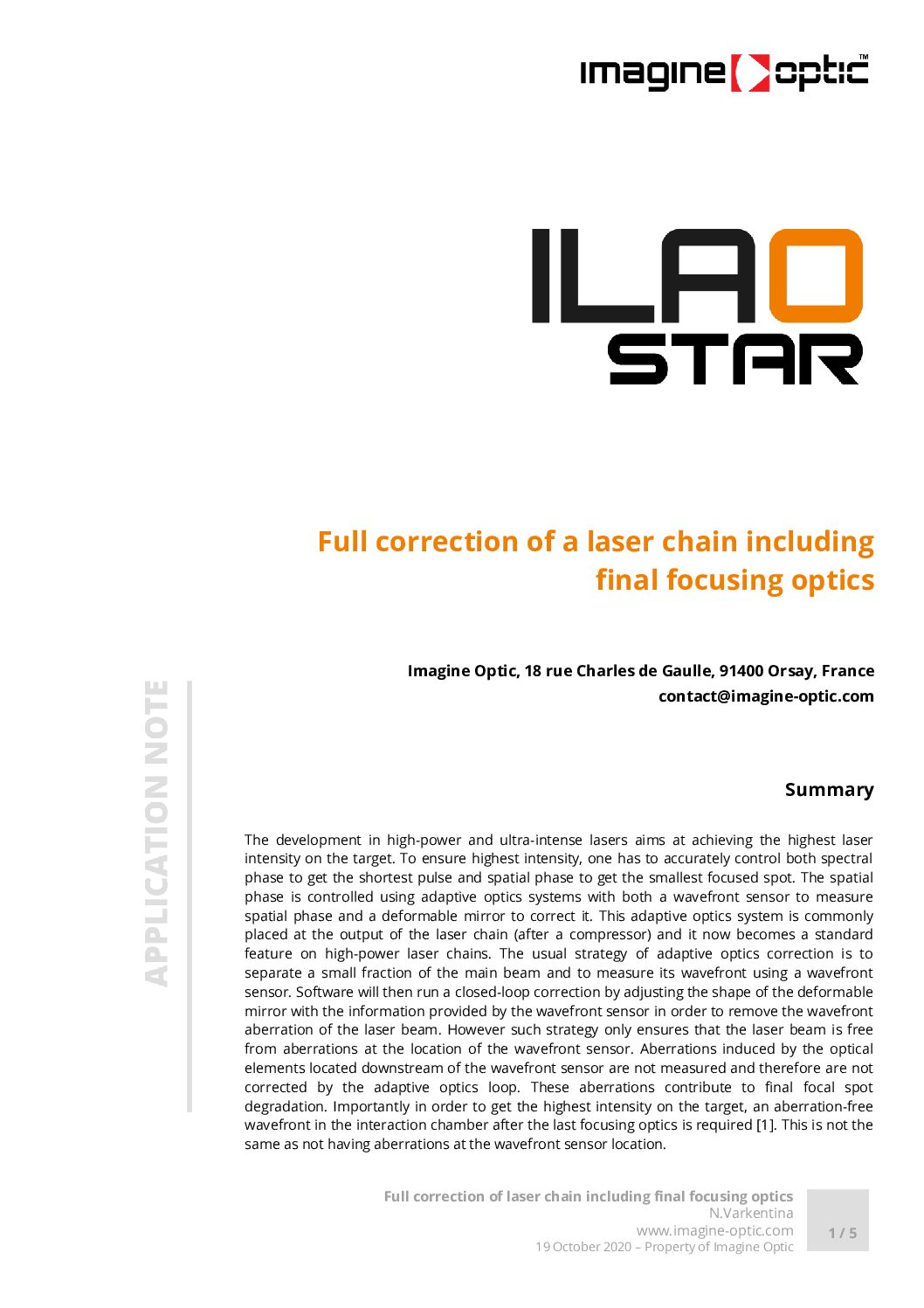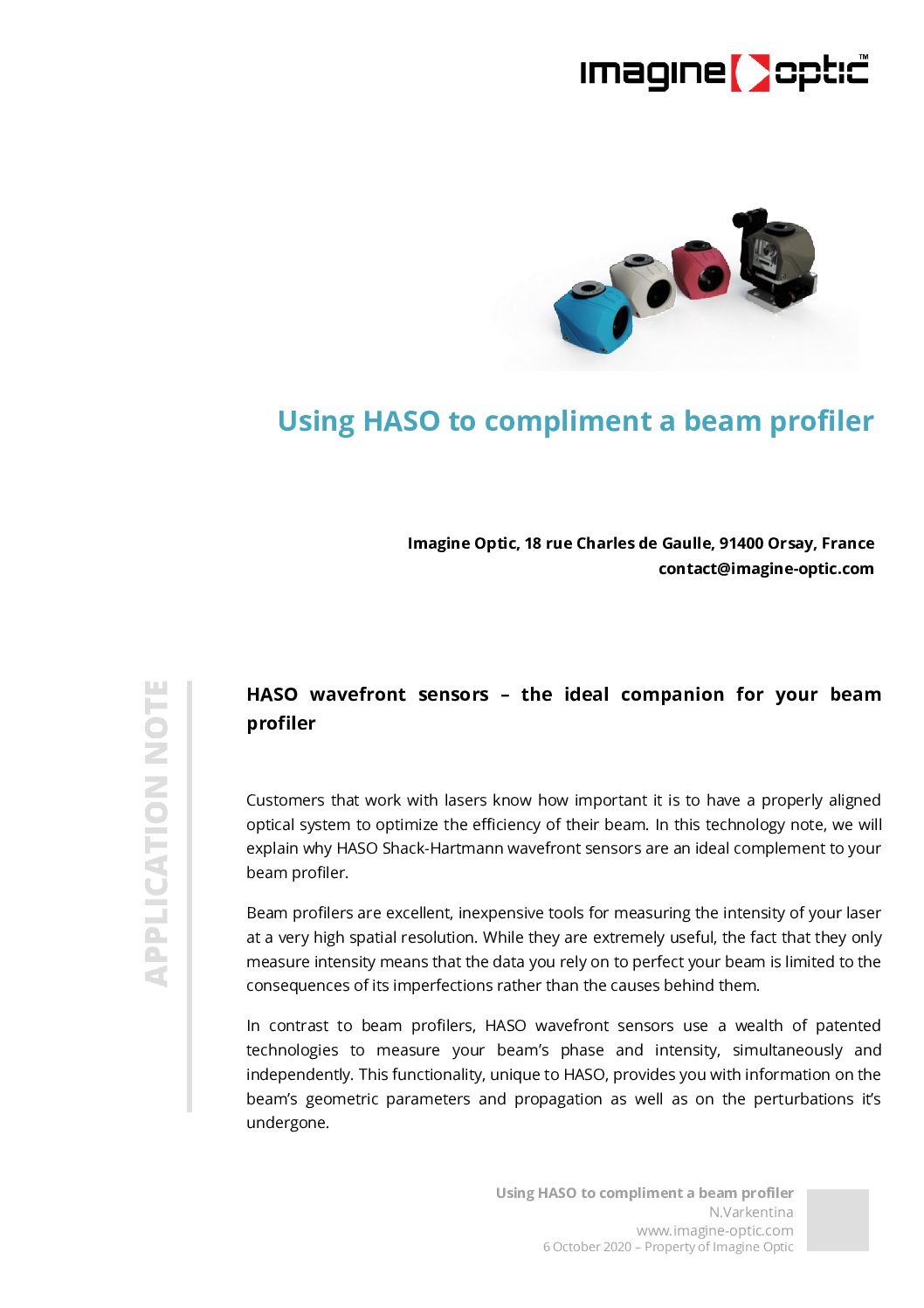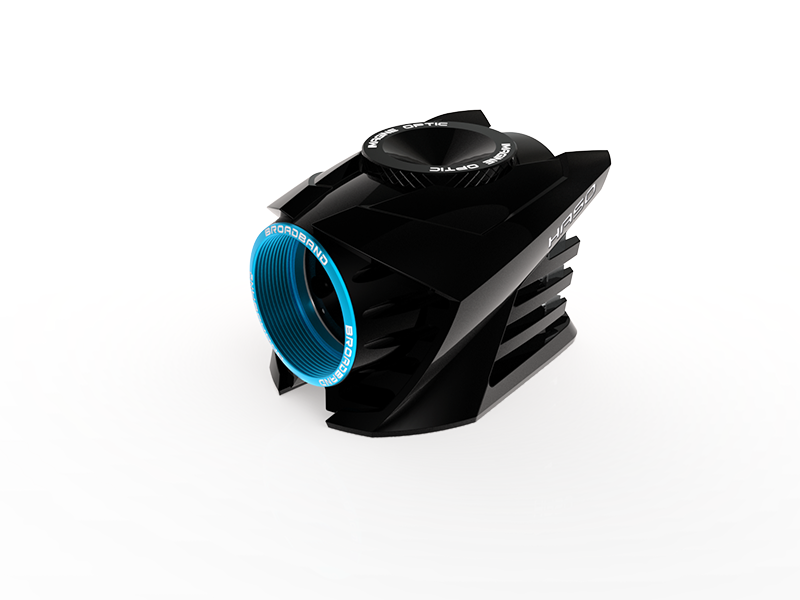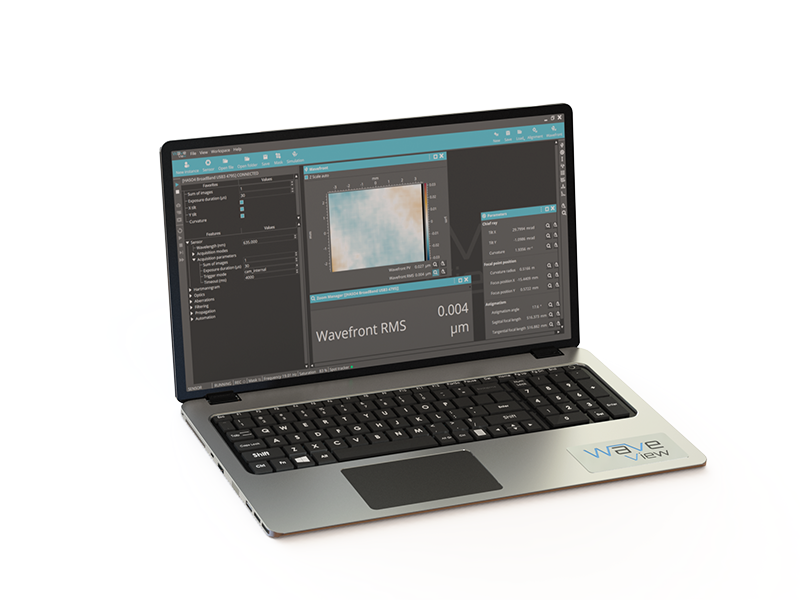Laser beam characterization
Ultra-High Intensity Lasers are notoriously complex. This means that mastery of their temporal, spectral and spatial performance is fundamental.
Thanks to Shack-Hartmann measurement, it is very easy to characterize spatial laser beam quality by analyzing the following:
– The spatial phase and the intensity profile of the near-field beam – PSF (Point Spread Function), that is, the spatial dispersion of energy in the laser’s focal point, and then comparing the maximum intensity on focus with the perfect theoretical intensity distribution via the Strehl Ratio
– M², which measures the degradation of the beam quality from the fundamental mode and also gives the waist position and size and beam divergence.
The spatial phase is controlled using adaptive optics systems with both a wavefront sensor to measure spatial phase and a deformable mirror to correct it.This adaptive optics system is commonly placed at the output of the laser chain (after a compressor) and it now becomes a standard
feature on high-power laser chains. For every application, there’s a HASO to respond to your needs.
First, you can compare your beam’s actual wavefront intensity and phase versus its best theoretical performance. This can help you work better and to save time by deciding for yourself what the optimal beam quality is to meet your individual needs. HASO equally allows you to analyze your beam’s performance over time to identify progressive or evolutionary variations via a recurring measurement functionality that allows you to define measurement intervals from fractions of seconds to several minutes or hours.

